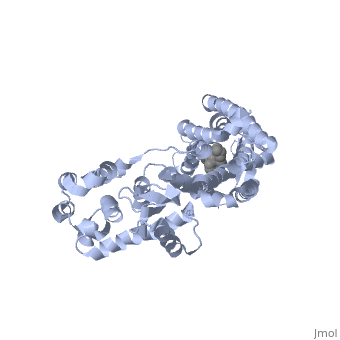Background
Amyloids are accumulated proteins that are folded up into a shape that allows for continual copies to be made of each protein. These proteins then create fibrils that is generated in the bone marrow and deposited throughout all organs and tissues. Numerous diseases can be credited to the over abundance of amyloid fibrils. Amyloids can be formed by many different proteins and polypeptides.
When amyloids were first discovered, they were mistaken by the German scientist, Rudolf Virchow, to be starch. This was due to it's reaction with iodine staining of the time. It was in 1859 that the scientific community found that they were not starch, fatty acid deposits, or carbohydrate deposits; but instead albumoid proteinaceous material.
Structure
The structure of the fibers typically form quaternary beta-sheet structures. The quaternary structure creates a larger group of polypeptides and proteins, which is stabilized by hydrogen bonds, disulfide-bridges, and salt-bridges.
Function
Amyloids have numerous functions for all organisms:
-Spider silk is formed by amyloids
-Increase cell adhesion on the top of Fungi to have stronger bonding
-Peptides and proteins are stored in the endocrine system of humans as amyloids
-Malaria uses amyloids as a coat protein
-Gas vesicles (that aid in buoyancy) of aquatic archaea and eubacteria
Disease
Relevance
Structural highlights
This is a sample scene created with SAT to by Group, and another to make of the protein. You can make your own scenes on SAT starting from scratch or loading and editing one of these sample scenes.

